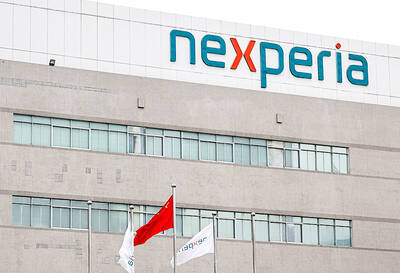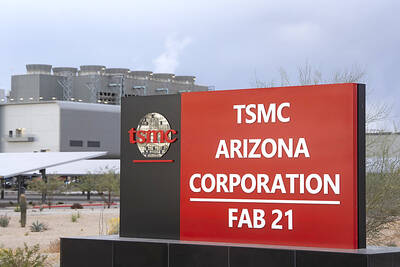Malaysian media tycoon Tiong Hiew King (張曉卿) is making a bid to merge his three Chinese-language publishing groups in Malaysia and Hong Kong to build one of the world's largest Chinese media conglomerates.
The merger will combine Tiong's Sin Chew Media Corp (星洲媒體) and Nanyang Press Holdings (南洋報業股份) in Malaysia with Hong Kong-listed Ming Pao Enterprise Corp (明報) via a share swap.
Tiong is the majority shareholder in Sin Chew and Ming Pao and is in the process of buying Nanyang.
"The merger is a strategic move to transform Sin Chew Media into an international media group to compete with global media corporations," Tiong said in a statement yesterday.
Sin Chew in the same statement said the enlarged entity would "leverage on its extensive global footprint to expand into the media market in China as well as globally."
The new group "will emerge as one of the largest Chinese language print media platforms," it told Malaysia's bourse late on Monday.
The merger will see the enlarged group operating through a publishing merger of Chinese-language newspapers and magazines in Malaysia, Hong Kong, the US, Canada and China, it said.
Under the deal -- which must be signed by April 30 -- Sin Chew and Nanyang will be de-listed from Malaysia's bourse and replaced with Ming Pao.
Sin Chew and Nanyang will become wholly-owned subsidiaries of Ming Pao.
Figures released by investment bank CIMB, which is advising Sin Chew on the deal, showed that the share swap deal is valued at 1.54 billion ringgit (US$439.6 million).
"Ming Pao Enterprise will ... become the first company to have a dual primary listing in both Malaysia and Hong Kong," Sin Chew said.
The company's executive director, Rita Chin, said yesterday that the exercise was targeted to be completed by February next year, with Sin Chew and Nanyang shareholders expected to vote on the merger in the fourth quarter of this year.
Hailing from Malaysia's eastern Sarawak state, Tiong made his name as a timber tycoon before venturing into the media business.
Forbes this year said his net worth was about US$1 billion, listing him as number 746 of 793 billionaires worldwide.
Sin Chew publishes Malaysia's largest circulated Chinese newspaper, the Sin Chew Daily, while Nanyang produces the country's oldest Chinese-language daily, the Nanyang Siang Pau.
Ming Pao Group's major publications include the Ming Pao Daily News, which is published in Hong Kong, Toronto, Vancouver, New York and San Francisco.

JITTERS: Nexperia has a 20 percent market share for chips powering simpler features such as window controls, and changing supply chains could take years European carmakers are looking into ways to scratch components made with parts from China, spooked by deepening geopolitical spats playing out through chipmaker Nexperia BV and Beijing’s export controls on rare earths. To protect operations from trade ructions, several automakers are pushing major suppliers to find permanent alternatives to Chinese semiconductors, people familiar with the matter said. The industry is considering broader changes to its supply chain to adapt to shifting geopolitics, Europe’s main suppliers lobby CLEPA head Matthias Zink said. “We had some indications already — questions like: ‘How can you supply me without this dependency on China?’” Zink, who also

The number of Taiwanese working in the US rose to a record high of 137,000 last year, driven largely by Taiwan Semiconductor Manufacturing Co’s (TSMC, 台積電) rapid overseas expansion, according to government data released yesterday. A total of 666,000 Taiwanese nationals were employed abroad last year, an increase of 45,000 from 2023 and the highest level since the COVID-19 pandemic, data from the Directorate-General of Budget, Accounting and Statistics (DGBAS) showed. Overseas employment had steadily increased between 2009 and 2019, peaking at 739,000, before plunging to 319,000 in 2021 amid US-China trade tensions, global supply chain shifts, reshoring by Taiwanese companies and

Taiwan Semiconductor Manufacturing Co (TSMC, 台積電) received about NT$147 billion (US$4.71 billion) in subsidies from the US, Japanese, German and Chinese governments over the past two years for its global expansion. Financial data compiled by the world’s largest contract chipmaker showed the company secured NT$4.77 billion in subsidies from the governments in the third quarter, bringing the total for the first three quarters of the year to about NT$71.9 billion. Along with the NT$75.16 billion in financial aid TSMC received last year, the chipmaker obtained NT$147 billion in subsidies in almost two years, the data showed. The subsidies received by its subsidiaries —

Shiina Ito has had fewer Chinese customers at her Tokyo jewelry shop since Beijing issued a travel warning in the wake of a diplomatic spat, but she said she was not concerned. A souring of Tokyo-Beijing relations this month, following remarks by Japanese Prime Minister Sanae Takaichi about Taiwan, has fueled concerns about the impact on the ritzy boutiques, noodle joints and hotels where holidaymakers spend their cash. However, businesses in Tokyo largely shrugged off any anxiety. “Since there are fewer Chinese customers, it’s become a bit easier for Japanese shoppers to visit, so our sales haven’t really dropped,” Ito